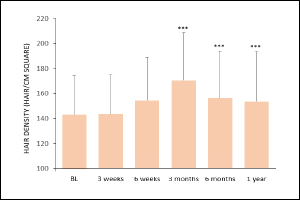Androgenic alopecia (AGA), also known as male/female type alopecia, is a common but difficult to treat disease that can have psychological effects on patients, even in mild cases. One of the most discussed treatment methods for AGA currently is platelet rich plasma (PRP) therapy.
PRP has always been advocated for promoting wound healing and tissue regeneration. PRP injection is considered a potential strategy for treating hair loss. If PRP and its secreted factors are believed to help regulate hair growth, then PRP injection would be a safe, minimally invasive, simple, and cost-effective method for treating AGA.
The main effect of PRP in treating AGA is believed to come from the massive release of PDGF, which plays an important role in reducing follicular apoptosis and promoting follicular cell growth. DHT plays an important role in hair follicle miniaturization and also reduces local IGF-1 production. PRP contains a large amount of IGF-1, which can counteract the inhibitory effect of DHT on hair follicles.
In a prospective study, 20 patients received intradermal injection of PRP for the treatment of androgenic alopecia. Perform 3 treatments with an interval of 21 days, and receive intensified treatment once every 6 months after the start of treatment.
♦ Evaluate clinical benefits based on hair density.
♦ Compared with the baseline level (before treatment), hair density significantly increased at 3 months, and remained significant at 6 months and 1 year after treatment.
♦ The patient is satisfied with the treatment, with an average score of 7.1 (1-10 points).
♦ No (major) adverse reactions were found.

♦ The data comes from Gkini et al. Display the hair density of patients receiving PRP treatment.
Mean ± SD*** P<0.001 compared to baseline (BL)

♦ The data comes from Betsi et al.
Use Hair Pull Test to measure hair loss in patients who receive PRP injection treatment every 2 weeks,
a total of 6 times. Mean ± SEM, compared to baseline (BL), p<0.01
♦ PRP treatment can restore hair loss to normal levels.
